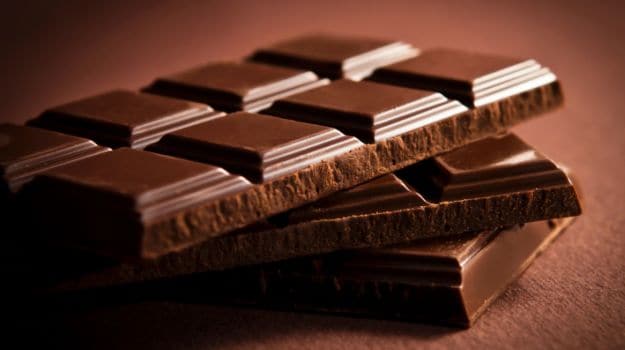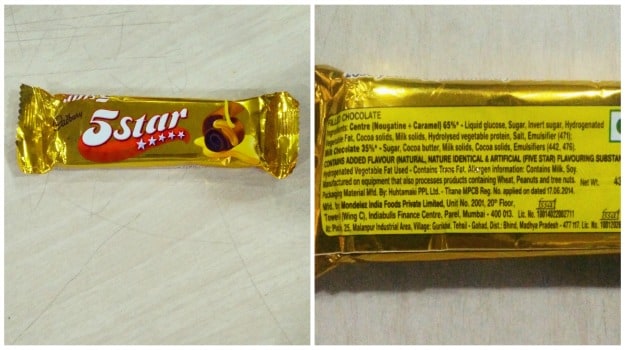The Truth About Chocolates: Why do Some Bars Melt and Some Don't?

It is not without reason that chocolate was referred to as the food of the Gods by ancient Mesoamericans. With its deep luxurious hue, velvety-smooth texture, spellbinding aroma and irresistible flavour, it has seduced one and all who have dared to partake in its divine offerings. It is incredible how with even a smallest bite, it can make you forget the world for those brief seconds as you give into complete indulgence. Well, at least that is what it does to me every time I bite into my precious and carefully guarded bar of dark chocolate with above 80 percent cacao. But truth be told, not everyone is accustomed to such an intense flavour. It is an acquired taste, which I have developed over the years with complete devotion to chocolates.
Growing up, for most of us milk chocolates were the ultimate definition of a treat. It always brought immense joy to tear open the purple packaging and unwrap the golden foil to finally savour the content. The easy-to-divide, multi-cubed chocolate bars were synonymous to a pat on the back for a job well done or being pampered by visiting relatives. One of my favourite ways to eating the bar was to let it melt a little in the sun and then go all in with my fingers. The luscious molten chocolate with its creamy feel made for the most cherished guilty pleasure.
That was then. Now let’s shift focus to other popular chocolate treats that most children so lovingly look forward to and relish with all their hearts. Wafer-based chocolates in varied flavours, nuts and caramel bars, and nougat treats, there are just no end to the options that are available in the market these days. It takes less than a 10 rupee note to buy happiness, so that ought to be good news right? But have you ever wondered, how a sacred ingredient that was compared to the Gods by the ancient folks and valued so dearly, is now as common as salt. Latest stats however reveal that the cultivation of cocoa beans from which chocolates are made is facing major challenges as the demand for it is much higher that what is produced each year. So if that is true, then the question really is how are the supermarket shelves still packed with what seems like limitless supply of chocolates?
The Molten Decadence

What makes chocolate so special besides its flavour and aroma is its creamy texture. This exceptional quality is brought about by what is known as cacao butter or theobroma oil. The chocolate making process is extremely labourious although it bears very sweet results. The cacao beans go through a series of techniques like fermentation, dry roasting, cold-pressing, etc. to finally separate the precious cacao butter from the mass. It is this pale-yellow cacao butter which is then used to make the chocolate bars that we are so accustomed to.
Cacao butter has high natural saturated fats and is very stable at room temperature. But with a little extra heat it loses its strength and acquires a molten, thick cream-like texture. This unique property is also the reason why as soon as you put a chocolate cube in your mouth it starts melting immediately, hence the phrase, “melts in the mouth”.
It is this very nature of cacao butter that had garnered my love for chocolates. Something about its rich velvety feel that makes it so hard to resist. So imagine my plight when I recently brought home some wafer-based chocolates and despite the packs lying out on a shelf in Delhi’s fearsome summer, none of them showed signs of the molten decadence that is characteristic of true chocolates. So what are we really eating?
The Other Kind of Cacao Butter
It is rightly said that along with fame comes many evil things. Chocolate’s rise to popularity did bring happiness to millions but it also led to a dark practise of adulterating the primary ingredient. This is not an uncommon phenomenon in the food industry. We have seen many fall prey to it – milk, cream, cheese, oils, liquors, etc.
Since cacao butter is an expansive commodity, many manufacturers of chocolates replace it with other types of fats such as vegetable oils – coconut, palm, rapeseed, soybean, etc. If you read through the label on some of the cheaply priced chocolate wrappers, chances are you may come across this ingredient - hydrogenated vegetable oils. Not only do they fail to match up to the luxurious taste and aroma of real chocolate, they are terribly harmful for health and probably the most dangerous of all kinds.
Vegetable oils are liquid at room temperature, so the process of hydrogenation is employed to make them attain a solid state or a firmer texture. Doing so also increases the shelf-life of the chocolates but on the flipside, it converts them into saturated fats or trans fats (on partial hydrogenation), which need no introduction. Take into account some of the most fearful diseases of all time (obesity, diabetes, heart disease, etc.) and they will trace back to these two as the culprits. So come to think of it, what we are actually feeding ourselves and our children are disease causing fats and sugars, which are sheepishly planning our own deaths.
Read Between the Lines
I must confess that it is only recently that I have started paying more attention to reading food labels before buying the products. I am certain that there are many who give no importance to reading the labels and believe, everything that is made available on the supermarket shelves must be good for health.
Now you may argue that if most chocolates today contain hydrogenated vegetable oils, which we all say is harmful for health, then why are these products open for purchase by the authorities? Well, they are allowed on the condition that all the ingredients must be clearly mentioned on the label so that the consumers can make their own choices. It is said that in the US, a product can be called chocolate only if it contains 100% cacao butter.
Did you know that almost all chocolates in India that contain hydrogenated vegetable oils do not have the word ‘chocolate’ mentioned anywhere on the wrapper? In other words, it may just mean that the brands are making no claims that their products are true chocolates.
Sadly, as a general consumer, we often fail to read between the lines and go by anything that smart marketing campaigns throw our way. We believe that all sweet products that resemble chocolates and are packaged in attractive wrappers must be as good as they say they are. If only good prevailed in this world!
We bring you a round-up of some of the top brands in the Indian market with their popular ‘chocolate’ products and what the labels have to say. Now, the choice is really yours.





 .
.
Great blog. All posts have something to learn. Your work is very good and I appreciate you and hopping for some more informative posts. Chocolate Bouquet Philippines
ReplyDelete